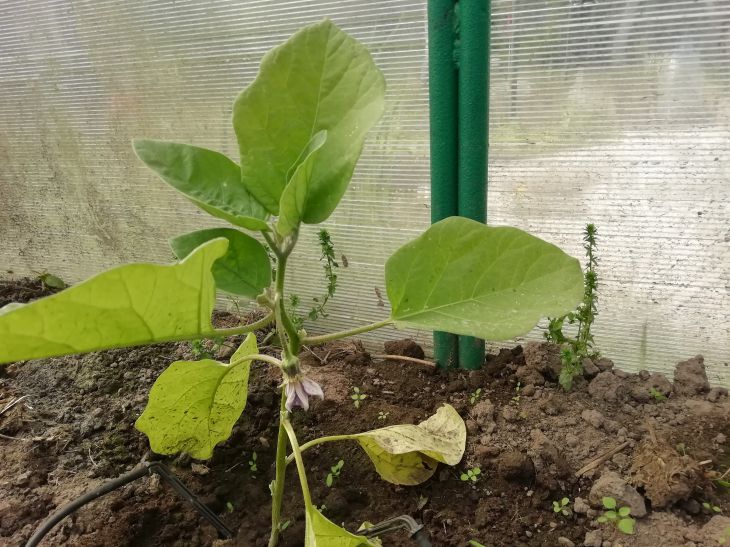Growing eggplants can turn into a fiasco. Sometimes this capricious vegetable simply does not set fruit or sheds the ovaries. Why this happens and how to fix the problem will be discussed below.
Temperature
Despite the fact that eggplant is native to hot climates, at temperatures of 30 degrees or more it does not set fruit.
This problem is especially relevant in greenhouses, where the temperature constantly rises to a critical level.
The problem is solved by ventilation and shading. Whitewash protects the greenhouse from the scorching sun. You can throw a camouflage or shading net on top.
If the summer is cold and the eggplants grow in open ground, they stop setting fruit because they are cold. This problem is more difficult to solve, but arches and agrofibre (film) stretched over them will solve the problem.

Eggplant also reacts to sudden temperature changes by shedding flowers and ovaries.
Drafts
It is very difficult to expect a harvest from this plant in a draft. When planting, choose a quiet, sunny place where there is no wind. In a greenhouse, do not open doors and vents located at different ends of the structure, as a draft will lead to loss of harvest.
Lack of moisture
Eggplants are very sensitive to moisture, they do not tolerate drought. They need to be watered at least twice a week, more often in extreme heat. The plant reacts to drought in the same way as to other extreme situations - does not set fruit or sheds it.
Lack of nutrition
This crop is more similar to cucumbers in its nutrition and watering requirements than to its tomato relatives. If the bush is starving, it gets rid of excess ovaries in order to throw all its energy into growing the fruits it already has.
Excess nutrition
The second extreme is overfeeding, especially with nitrogen fertilizers. In this case, the bush grows large, lush, beautiful and sterile. All its energy will be thrown into growing tops, and it will not even set fruit.
No pollination
This problem is typical for greenhouse cultivation, where access to bees and other pollinating insects is limited. There are self-fertile varieties that bear fruit perfectly without pollination. But even they set fruit better if they cross-pollinate with other plants. Ideally, if different varieties grow nearby.
To increase the yield, you will have to replace the bee with yourself. Flowers are well pollinated with an ordinary watercolor brush. You just need to "poke" the bristles into all the blossoming flowers. This should be done regularly.
Also, do not forget about side shoots, otherwise the extra shoots will take a lot of nutrition. The principle of formation is the same as for tomatoes.








